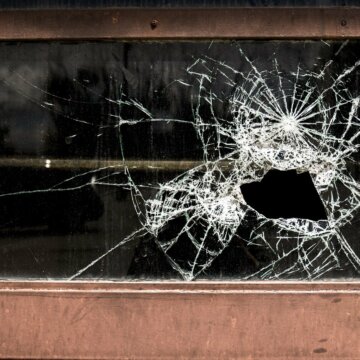- About
- Topics
- Picks
- Audio
- Story
- In-Depth
- Opinion
- News
- Donate
- Signup for our newsletterOur Editors' Best Picks.Send
Read, Debate: Engage.
| topic: | Security |
|---|---|
| located: | Russia |
| editor: | Andrew Getto |
Mass school shootings are taking place with increased frequency in a huge country with a notoriously violent image - but it’s not the land of the Second Amendment. On 20 September, a student shot six people dead in the city of Perm, Russia, in a second Columbine-like attack this year.
It’s still hard to grasp how what was once considered a strictly American phenomena is now a reality thousands of miles away. In a weird linguistic case, Russian media outlets have referred to the incidents as ‘shootings’, using the transliterated English word instead of a Russian one.
On Monday, Timur Bekmansurov, 18, put on a helmet and a balaclava and brought a shotgun into Perm State University, which he had just enrolled in as a first-year law student. Russian students had to experience exactly what thousands of their American peers did over the past two decades - endless minutes of dread behind barricaded doors, listening to the sounds of gunshots. After killing six people, the perpetrator was soon taken down by a traffic officer and is now in recovery.
One of Bekmansurov’s former classmates recalls that once, when he received a low mark in a chemistry class, he promised to buy a gun and kill everyone. Like many recent mass murderers he left a hate-induced manifesto online. He expressed deep dissatisfaction with his life among people he considered as grey and hopeless as his city. He calmly described planning the attack almost two years in advance, saving up for a $300 Turkish 12’’ Huglu Atrox shotgun and getting a hunting weapon licence.
Since 2014, 45 people in Russia have been killed in school shootings, not counting the Perm attack. In 2018, a college student killed 21 people, including himself, and wounded 67 others in Kerch, Crimea; in 2019, a 19-year-old shot dead four peers, including himself, in Blagoveshchensk; then, in May 2021 a young Kazan resident entered his university in a face mask that read “GOD” and killed 9 peers.
Despite the mounting attacks, the authorities seem to remain in denial. After every massacre, politicians talk about reenforcing security and video surveillance, as well as mental health staff in educational facilities. Then security agencies make some surprise raids, report some (non-surprising) violations, and that’s that until the next attack.
However, Perm University wasn't not at all prepared. One Russian literature teacher even continued the class as the attack unfolded, arguing that his students would still have an exam either way. The lack of preparedness could be explained if the shooting was the first of its kind - but it wasn’t. The only thing that the authorities did eagerly was to outlaw “Columbine communities” on social media, as if organising mass murders was legal before.
Banning social media groups is easy; ending mass shootings is definitely not. Should the government write stricter gun laws? They are already pretty tough in Russia. Should it monitor every unstable youth? That’s hardly possible anywhere in the world.
To draw at least one conclusion, one could look at something that unites Russia and the United States: the cult of weapons and military might.
According to grim statistics, a Russian man from the Perm region might not expect too much from life: he is likely to earn about €270 per month and die before age 70. Certain propaganda might suggest to him a way to live better than the statistics: by enlisting in the army or a private military company and going to war. Hundreds of thousands of Russian men follow this military path. The Perm shooter’s father did military tours in Chechnya, Ukraine and Syria; he also approved of his son’s purchase of a weapon as a “normal thing for a man.”
Owning a gun does not automatically make one a mass murderer; but the combination of having a weapon and living a statistically difficult life where military culture is normal increases the risk.
Image by Paul Barlow

